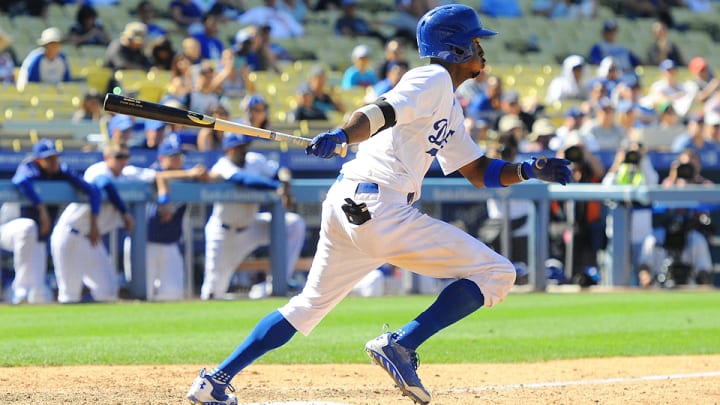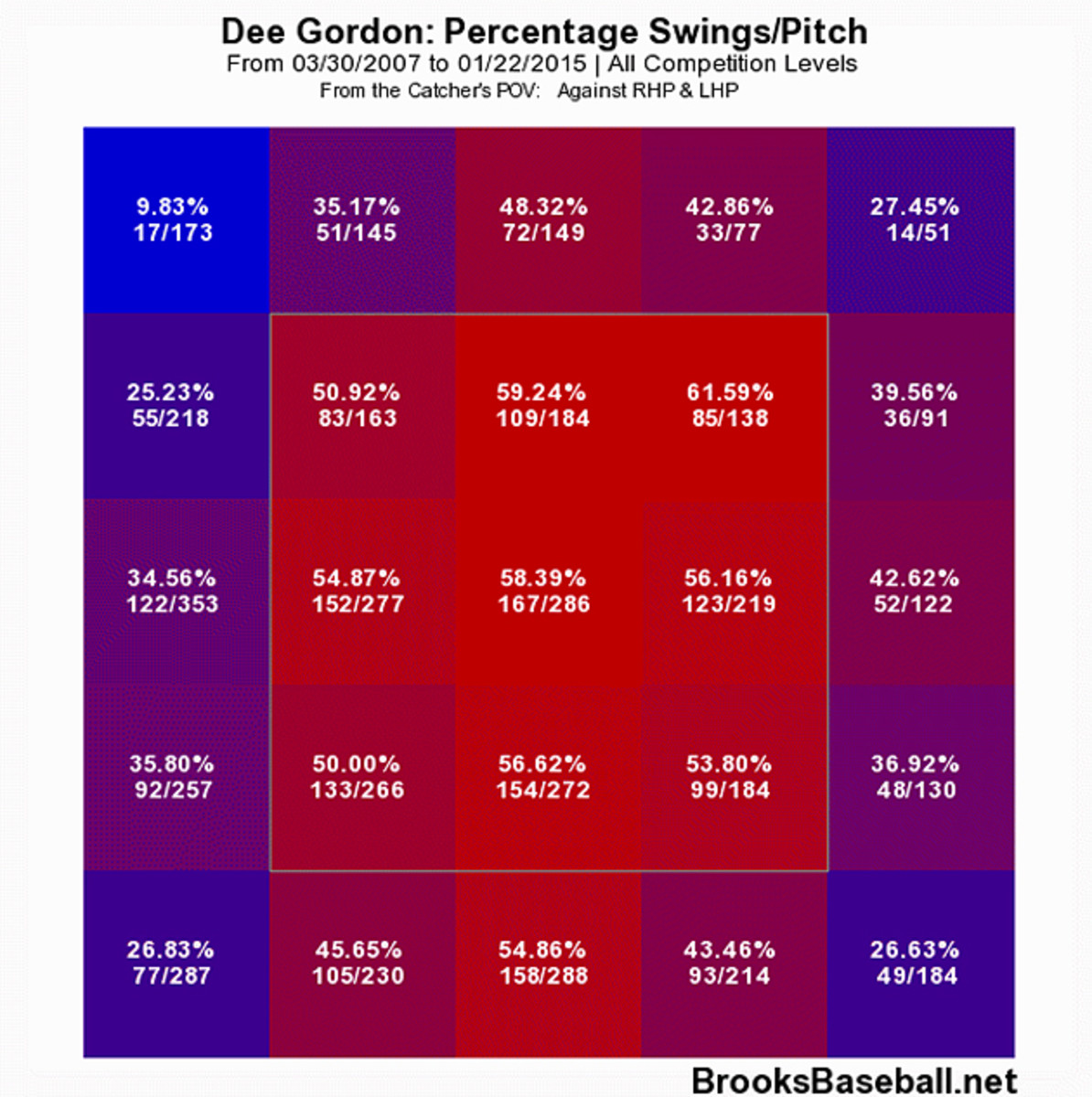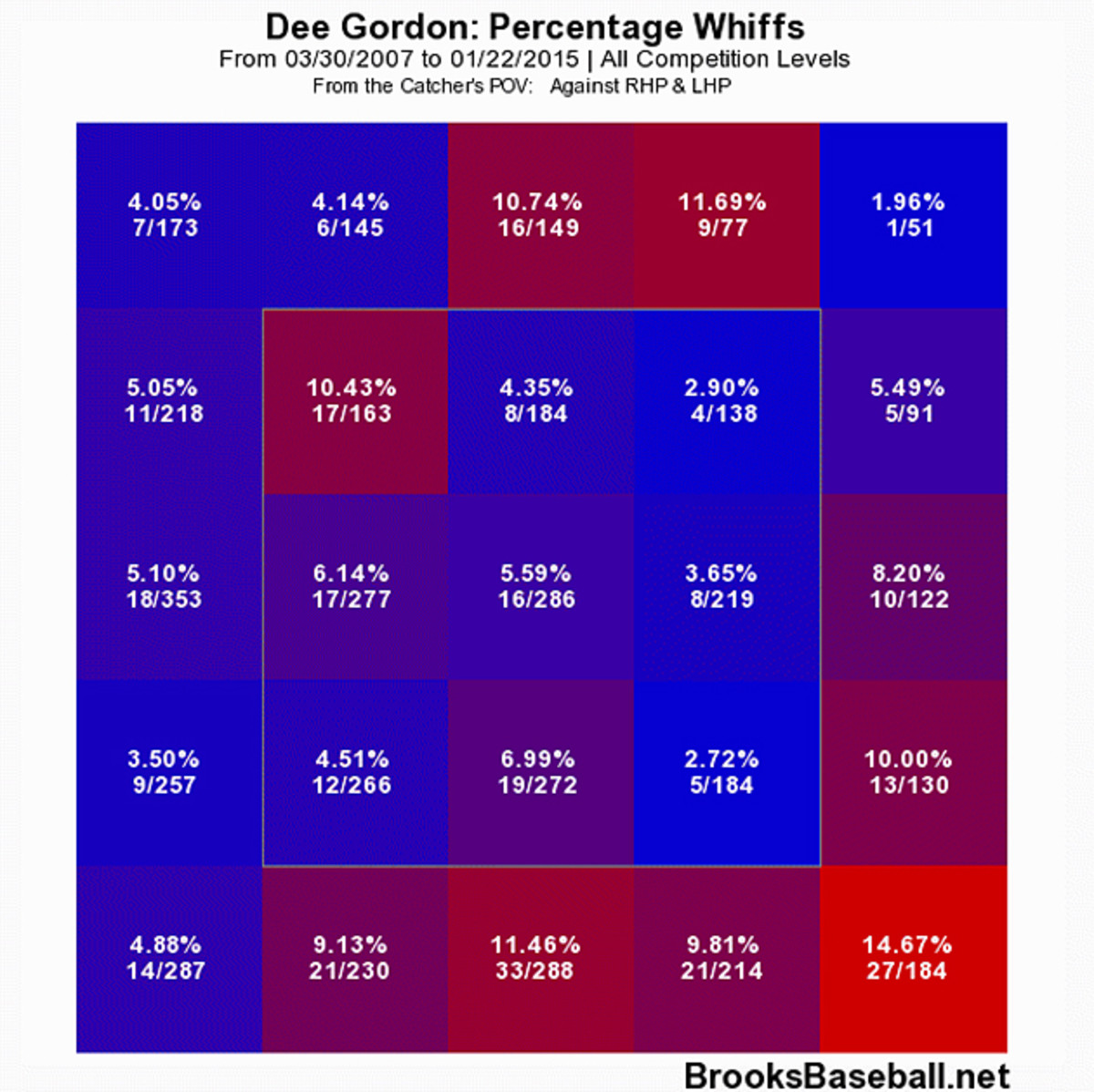Player Profile: Dee Gordon primed to fall short of his draft-day value

To kick off our fantasy baseball preview, Michael Beller will profile certain players who may not fit as a breakout, sleeper or bust (all of which we'll discuss in our preview), but who will still make a major impact in fantasy baseball this season.
A handful of players remain free agents as we inch closer to when pitchers and catchers report to spring training, but the most exciting offseason in some time has all but concluded. There were a lot of moves made this offseason, and even more players changing addresses, but not every one made sense. Like, for example, the Braves signing of Nick Markakis viewed through the lens of everything they did after that. Or the Mets’ inking the soon-to-be 36-year-old Michael Cuddyer to a two-year deal as their only acquisition, and sacrificing a draft pick to do so. Hey, not everyone can sign Jon Lester or Max Scherzer.
• Every MLB Winter Report Card | Follow free-agent signings with our tracker
Player profile: Tyson Ross' slider and sinker make him a fantasy steal
You would be wise for thinking the NL East cornered the market on head-scratching moves this offseason, but it was the Marlins who trumped both the Braves and Mets. After locking up Giancarlo Stanton for the next three presidential administrations (good), they traded promising young pitcher Andrew Heaney for Dee Gordon, in a trade that ultimately involved three teams and eight players. Gordon seemed to put it all together last year, slashing .289/.326/.378 with 64 steals and 92 runs. If he reaches those levels again, he’ll be well worth the price you have to pay to get him on your team. The chances he does so, however, are slim.
Even if you believe in Gordon, you have to admit that he’s a prime regression candidate heading into 2015. Last season, Gordon rode huge monthly performances in April and June to a strong first half, hitting .292/.344/.398 with 43 steals. He fell off in the second half, compiling a .284/.300/.348 slash and swiping just 21 bags. Gordon’s speed is a constant, and it’s going to establish a baseline value for him. What put him over the top last year was the combination of a high batting average along with elite production in steals and runs. If he takes a step back in any of the three, he’s going to come up short of his draft-day price tag. There’s reason to believe his counting stats won’t reach their 2014 levels.
Despite enjoying a breakout season, Gordon did not learn how to take a walk. His walk rate was a paltry 4.8 percent, resulting in an OBP that was just 37 points higher than his batting average. He showed no better understanding of the strike zone, offering at one-third of the pitches he saw that were out of the zone last year, comfortably higher than league average. Below is a screenshot of Gordon’s swing rate, broken done by zone, courtesy of Brooks Baseball.

That’s far too much red and purple surrounding the strike zone. Granted, it’s not a huge problem if Gordon swings at those low pitches, provided he makes contact, as he’s able to turn routine grounders into infield singles. He and Jose Altuve led the majors with 31 infield hits, and his 11.3-percent infield-hit rate was the eighth highest in the league, tied with Dexter Fowler.

The league-average swinging-strike rate for all pitches is 9.5 percent, so it’s not surprising to see Gordon’s rate for balls down out of the zone higher than that. The speedster is making it harder on himself to take advantage of his greatest asset. If he could reach the median walk rate, he’d be an annual threat to steal 70-plus bases. Given that he essentially relies entirely on hits to get on base, he’s asking for a whole lot from the BABIP fairy.
Having said that, Gordon did a great job of making contact last year. His strikeout rate (16.5 percent) and contact rate (87.2 percent) were both better than leaue average, while his 5.7-percent swinging-strike rate was in the upper echelon. His .346 BABIP was fortunate on its face, but we’re also talking about a left-handed speed demon who hits three ground balls for every fly ball. In other words, high BABIP could very well be a repeatable skill for him.
Ultimately, there’s a lot of risk baked into Gordon because of his relatively high going rate. His unwillingness to take a walk makes him far less valuable in leagues that use OBP in place of batting average, and if he takes a step back at all in the latter, he’s going to be a colossal bust. Steamer projects him to hit .257/.308/.335 with 47 steals and 64 runs. If that turns out to be accurate, he’ll be a glorified Alcides Escobar.
